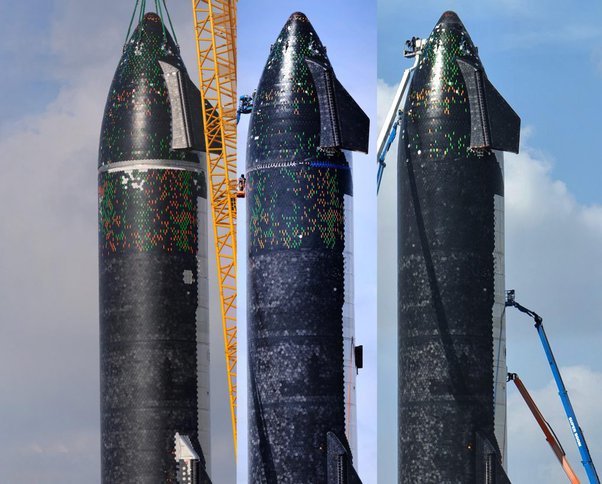Starship's Scaly Shield: Demystifying Heat Tiles and SpaceX's Thermal Protection Choices

How do heat tiles differ from other thermal protection methods used in spacex's starship spacecraft design?
SpaceX's Starship, designed for deep-space travel and ambitious lunar and Martian missions, faces a fiery ordeal upon re-entry into Earth's atmosphere. Temperatures can reach a scorching 3,500 degrees Celsius, demanding a robust thermal protection system (TPS) to shield the spacecraft and its precious cargo. But with various TPS options available, why did SpaceX choose the unique path of heat tiles for Starship? Let's delve into the world of heat shields and understand how Starship's tiles stand out.
Traditional Titans: Ablative and Radiative TPS
Historically, spacecraft like the Space Shuttle relied on ablative TPS, where heat-resistant materials like carbon fiber composites char and vaporize, absorbing heat and protecting the underlying structure. While effective, ablative systems require significant material, adding weight and limiting reusability.
Advertisement
Another established method is radiative TPS, where heat is reflected instead of absorbed. Materials like ceramic tiles used on the Space Shuttle reflect a high percentage of heat, but their brittleness makes them susceptible to damage.
Starship's Scaly Solution: Hexagonal Heat Tiles
Starship breaks the mold with its hexagonal heat tiles, made from a special blend of ceramic called LTS (Low-Temperature Sintered) 900. These tiles offer several advantages:
Advertisement
- Reusability: Unlike ablative systems, Starship's tiles are designed to be reused repeatedly, reducing mission costs and environmental impact.
- Lightweight: LTS-900 is lighter than traditional ceramics, contributing to Starship's overall mass efficiency.
- Durability: The hexagonal shape distributes stress evenly, enhancing resistance to mechanical damage and thermal cracks.
- Manufacturing simplicity: The tiles are 3D-printed, allowing for rapid and cost-effective production.
However, these tiles also face challenges:
- Development time: LTS-900 is a relatively new material, requiring extensive testing and refinement.
- Manufacturing complexity: While 3D printing offers advantages, achieving consistent quality across a large number of tiles requires careful process control.
- Repair challenges: Damaged tiles might require complex on-site repair techniques for reusability.
Beyond Tiles: Starship's Multi-Pronged Approach
It's important to note that Starship's TPS isn't solely reliant on these tiles. For the Super Heavy booster, which experiences lower re-entry temperatures, the airframe itself, constructed from stainless steel, provides sufficient thermal protection. Additionally, Starship might incorporate transpiration cooling in specific high-heat areas, where a coolant is circulated through channels behind the tiles to absorb heat.
Advertisement
By combining these methods, SpaceX aims to achieve a robust, reusable, and efficient TPS for Starship, paving the way for its ambitious spacefaring endeavors.
Advertisement